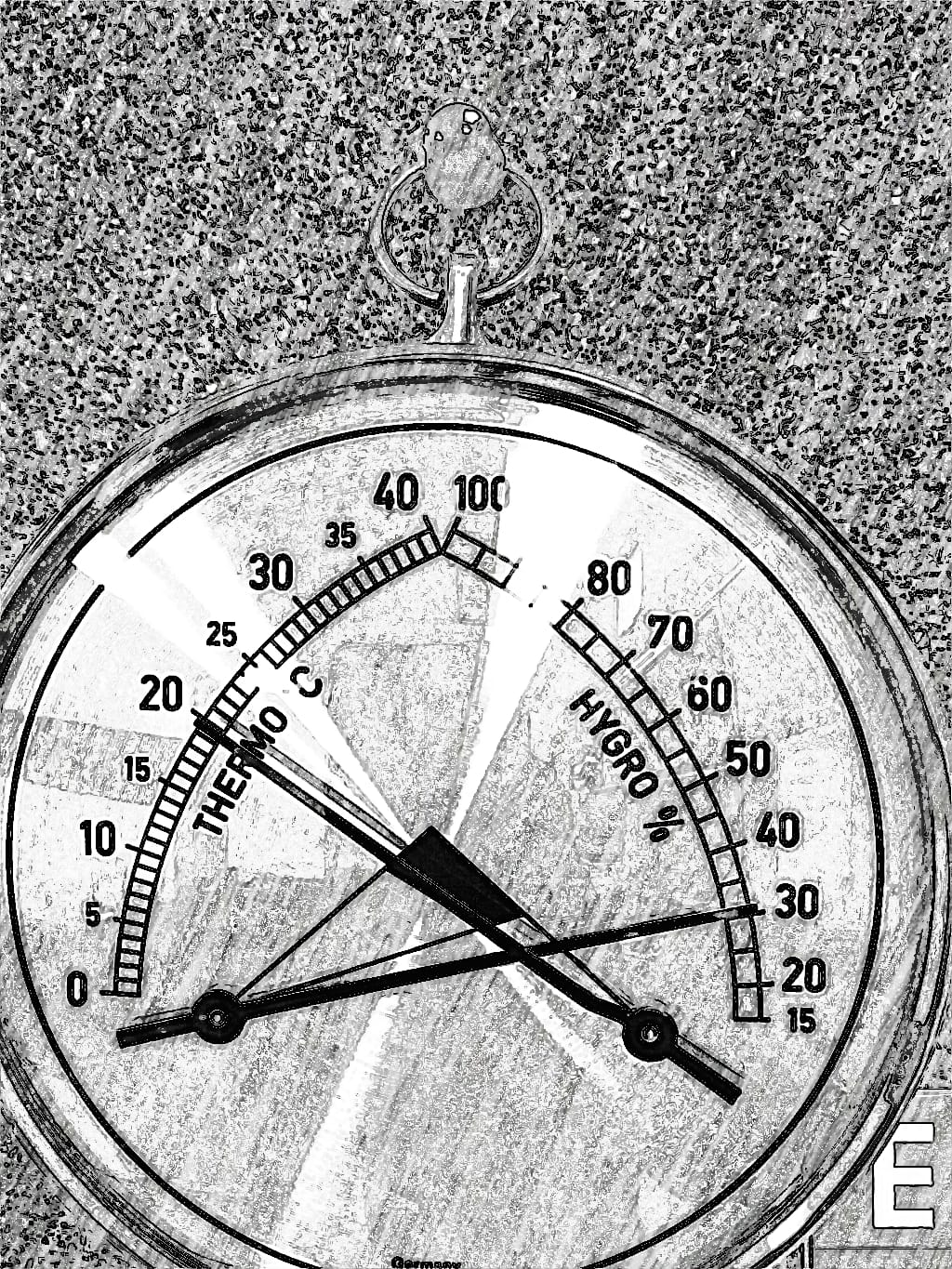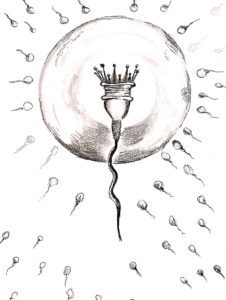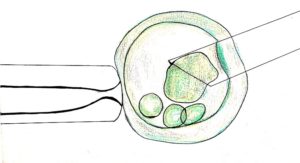The information presented in this guide is only valid for cases of absolute Azoospermia, where no sperm cells were identified after repeated examination by qualified professionals. The presence of a few sperm cells (verified by multiple examinations) is a separate clinical scenario.
Background: The quality of sperm in men around the world is in constant decline. During the last century, the quality of sperm has been reduced by over 70%, in terms of both the quantity of the sperm and its quality (i.e. motility and morphology). This means that if a man is considered to be fertile today, he in fact only possesses one-third of the fertility possessed by a man of the same definition from a hundred years ago. Just in the last 20 years, there is a reduction of over 30% in sperm quality. It is interesting to note that this has occurred in developed countries, not in third world countries. Azoospermia, that only a few years ago affected half a percent of all men, now days affects one percent of all men, and prevalence is expected to rise over time.
The reason for the rise on azoospermia is a point of debate in the scientific and medical community – Pollution, overheating of the testicles due to activities associated with western living, radiation, industrialized and hormone-rich food, and genetic mutations that have developed over time have all been suggested as possible causes. No matter the reason, it is recommended to avoid carrying cell phones in the pockets of one’s pants, avoid using a laptop while it rested on one’s knees, and avoid any other activity that can cause overheating of the groin area.
Azoospermia is divided into two main types: Obstructive and non-obstructive. Obstructive azoospermia (OA) is defined as the absence of spermatozoa in the ejaculate despite normal spermatogenesis (i.e. production of mature sperm cells). OA is a common urologic condition and accounts for 6.1% to 13.6% of patients presenting for fertility evaluation. Vasectomy is a frequent cause of OA; however, alternate etiologies such as infection, iatrogenic injury, and genetic and congenital conditions are all possible causes of OA are frequently encountered. Non‐obstructive azoospermia (NOA) is defined as no sperm in the ejaculate due to the failure of spermatogenesis and is the most severe form of male infertility. The etiology of NOA is either intrinsic testicular impairment, resulting from chromosomal or genetic abnormalities, or inadequate gonadotropin production. The procedures for treating each type of azoospermia are distinct. In cases of NOA, the reason for the condition will probably be unknown. The research into the condition is still ongoing; many aspects are yet to be uncovered.
Initial tests: After a sperm count confirmed the presence of zero sperm cells in a sample, several lines of investigation will be pursued. First, you will be asked questions about your medical history, such as – Were you born with an undescended testicle (cryptorchidism)? Had the mumps at an older age? Went through chemotherapy/radiation therapy? Underwent an operation for an inguinal hernia?
After an examination of your medical history, lab testing will begin. Hormonal testing will be done first. Usually, if irregular levels of testosterone and/or LH and FSH (too high/low) are measured in these tests, a problem in the production of sperm is presumably the cause of azoospermia, more specifically, of non-obstructive azoospermia. However, there are known cases of non-obstructive azoospermia despite the normal hormonal activity. If diagnosed with azoospermia, it is highly recommended to regularly examine hormone function. Undergoing blood testing every few months to determine the hormonal profile of – testosterone, free testosterone, progesterone, prolactin (only after 3 hours of being awake), 2E= estradiol, LH, FSH, TSH is recommended.
Examination of sperm [k1] can indicate the reason for azoospermia. Low PH and fructose levels, as well as low volumes of ejaculate[k2], point towards obstructive azoospermia.
Genetic tests, such as karyotyping[k3], Klinefelter syndrome diagnostic tests, and Y-chromosome deletions testing. A positive result in these genetic tests will carry a diagnosis of non-obstructive azoospermia. There is no means of correcting the genetic anomalies which are responsible for non-obstructive azoospermia, making the treatment of this azoospermia the same as those for obstructive azoospermia. Moreover, non-obstructive azoospermia will most likely be inherited by male offspring. Therefore, the possibility of undergoing embryo selection, to select only female embryos pre-implantation (PGS), should be considered.
There are many known Y-chromosome deletions. Males with Y chromosome infertility have azoospermia or severe, moderate, or mild oligozoospermia depending on the location and size of the Y chromosome deletion. Deletions responsible for infertility occur in sections of the chromosome known as AZF (Azoospermia Factor). Deletions of entire sections and partial deletions of AZF sections can occur, with deletions in AZFc considered to be less severe than deletions in AZFb or AZFa.
Another important test is for Cystic Fibrosis (CF). If diagnosed with CF, full genetic profiling is recommended, because CF can be passed on to even male offspring, in cases, the female partner is a carrier of CF.
Trans-rectal Ultrasound [k4] – Not a pleasant procedure, but an important one at that. This invasive procedure is used to determine if the Vas Deferens exists (could be absent to genetic abnormalities such as CF), if it is blocked, or if there are other issues that prevent sperm from passing from the testes to the penis. If the vas deferens is clearly visible in this test, your azoospermia is most likely non-obstructive. This ultrasound and the analysis of results from it require a considerable level of expertise from the physician. Choosing the physician for this procedure is important. An alternative to transrectal ultrasound is an MRI, a more expensive approach but a less invasive one as well[k5]. There are doctors that check for the existence of sperm[k6] strings by examining the area with their hands, but this method is much less sensitive and accurate.
Diagnosing and treating varicoceles- A varicocele is an enlargement of the veins around the vas deferens and the testes (usually causes warming and halted production if sperm on the left side of the testes, but can also occur on the right side). A varicocele is similar to a varicose vein in the leg. Opinions vary as to the effect that treating varicoceles has on absolute azoospermia, especially when the diagnosed varicocele is of low grade (clinical level 1-2). It is very rare that by repairing a varicocele (even one of clinical level 3) sperm production will increase. Therefore, it is recommended to first pursue the use of advanced sperm searching methods before considering varicocele surgery.
The diagnosis of varicoceles is done through the use of a doppler ultrasound. However, a high level of expertise is needed to make the right conclusion from this procedure. Once diagnosed with a varicocele the repair could be done with one of two methods: Laparoscopic surgery[k7], and open microsurgical varicocelectomy. With laparoscopic surgery, there is a risk of not being able to reach all veins in the affected area (depends on the surgeon’s ability). Open microsurgical varicocelectomy will usually give a better outcome due to the procedure’s ability to reach every affected vein through the small incision made to the testicle.
Advanced sperm searches: [k8] Before proceeding to invasive methods and surgeries, a patient must undergo advanced sperm search methods, which enable a thorough examination of semen samples to find any viable sperm that can be used in IVF procedures. In general, these methods make use of microscopes (x6,000), but the emphasis is not on magnification, but rather on meticulous attention to detail, the dedication of sufficient time, and high level of expertise when examining semen samples. The procedure involves advanced methods of circulating fluid within the sample while segregating the relevant portions that could possibly contain sperm and making sure the entire sample is examined. Advanced sperm searches have a proven record of success, sparing patients from the need to undergo surgical procedures meant to recover sperm. Still, the success rate for finding viable sperm in these searches, when compared to standard lab procedures, currently stands at 20%. When choosing a facility for these procedures, please consider that there are technical differences in the way a sperm search can be performed: Some labs freeze the recovered sperm together with the material that surrounded it in the semen sample, thus making it necessary to do a second search for this sperm before IFV; Some labs only count the sperm cells in a sample without employing any measures of examining the sperm’s ability to fertilize an egg, at least by check the germ load within the sperm sample (by using bacterial cultures), although this has no impact on clinical outcomes.
Regarding sperm searches, it is important to remember that not finding any sperm cells in a search should not lead to a definitive conclusion about the inability to isolate sperm cells. There are known cases in which repeat searches, sometimes the following surgery (see next sections), have found sperm cells. The biological rationale that supports this approach is based on the fact that sperm production is a dynamic process that replenishes over time (every 3 months), and therefore there is no way of determining when this system will be able to produce sperm.
Additional treatments: Additional treatments that can be performed can be divided into two categories: Conventional (mainstream) medical procedures and alternative medical procedures. It must be said that the majority of these treatments and procedures are not effective in most cases, according to the practitioners and physicians themselves. If you hear of a success story from a trusted source, know that it is an outlier. Another aspect to be aware of is the lengthy period of time it will take for these treatments to show results – at least 3 months (the period of time it takes the body to produce sperm).
Conventional treatments – Several treatments exist within conventional medicine. First, drugs that support and increase the production of hormones in the testicles, to encourage the production of sperm, can be prescribed. Ikaclomin (Clomifene Citrate) can be prescribed (in doses of half a pill x2 per day) for periods of 3-6 months, and Anastrozole (Arimidex) can also be prescribed for the same purpose. More aggressive treatment can be to inject patients with Pregnyl (HCG)\Puregon (FSH)\Gonal F (FSH), which are meant to provide the same effect as the drugs mentioned above.
Hormonal treatments have an added value, even if they do not eliminate the need to undergo surgery, they will bring the body to an optimal physiological condition needed for surgery. This will increase the chances of finding sperm during surgery and will enable the body to recuperate from the surgery much better, without experiencing traumas brought on by the surgery.
Prostatic massage – This treatment is based on the assumption that azoospermia could be caused by sperm cells being killed by bacteria on their way out of the testicles. Therefore, the treatment is coupled with bacterial cultures of the extracted semen samples, along with advanced sperm searches to isolates sperm from these samples. The treatment itself consists of two types of massages: 1) first, during evening hours, a prostate massage is performed, after which the fluid extracted during the massage is analyzed for the bacterial load (90% of men have bacteria in their semen, and antibiotics are given to eliminate them), 2) after several sessions, and after the prostate has shrunk by having its fluid extracted several times, a massage is performed during morning hours. During this massage, the sperm glands located behind the prostate are squeezed in order to extract the sperm cells that they contain. This sample is then taken to an advanced search of sperm cells.
The treatment course of prostatic massages is very difficult, both in terms of the procedure itself (humiliating and painful), and in terms of the treatment’s length – each session is separated by 3 months, and assuming there is usually 6 session (5 massages of the prostate and an additional massage of the sperm glands), the entire process takes more than 18 months (patients can undergo more massages, even as many as 15). Some physicians recommend this treatment before resorting to surgery because it is their expert opinion that surgery should be the last option, after which no treatment will be of any use. However, the success rate of prostatic massages is very low, making it a heavy investment of time and money. Moreover, when sperm cells are recovered from samples taken during this procedure, the fertilization rate when using them was much lower than expected (i.e. compared to sperm cells recovered with other measures), especially when taking into account the success rate of sperm recovered with surgical intervention. Meaning that the majority of these sperm cells were not alive when recovered (A possible means of addressing this issue is by using hormone injection while being treated with prostatic massages, which have helped to increase the number of viable sperm cells).
Alternative medicine – There are several treatments from this field that are offered to individuals with absolute azoospermia. These include a diet of natural and organic produce, nutritional supplements, and acupuncture (the latter required substantial expertise). The success rate of these approaches in regards to azoospermia, especially absolute azoospermia, is very small, much smaller than those of the other additional treatment presented above.
Surgery: The rationale behind using surgery to find and isolate sperm cells in azoospermic men is based on the complexity of the male reproductive system, specifically the production of sperm and its delivery through the system. Even if some organs within this system are not functioning properly, especially those that are tasked with delivering the sperm from the testicles (e.g. vas deferens), then there should still be viable sperm that could be extracted. This prevents biopsies from serving as a diagnostic tool because they can only inform about the specific place from which they were taken, and not the entire reproductive system.
Surgeries can be divided into three types:
Tesa\Tefna- Surgical procedures that do not involve dissecting the testicles, but only blindly puncturing the tissue in several spots with a needle and then drawing the liquid out. The difference between the two techniques is that Tefna is performed with a thinner needle and more zones are sampled on the tissue.
Regular TESE- The testicle is dissected by cutting it open, both diagonally and vertically, and extracting a wide sample of tissue from several spots.
Micro-Tese- Also involves dissecting the testicle, using a microscope and other delicate equipment to examine the tissue, then taking a small sample from every place that appeared under the microscope to contain sperm cells, or be capable of producing sperm, thus the entire testicle is analyzed, which is not the case in other surgical procedures.
Pesa and mesa are surgical methods used to extract sperm from the Epididymis, the latter method uses micro-surgery, and they are intended for cases of obstructive azoospermia only, which unlike non-obstructive azoospermia does not require operating on the testicles.
There is an ongoing debate about which surgery, regular Tese or micro-Tese, provides the best results. The same experts advise patients to undergo a regular Tese surgery, but others recommend doing a micro-Tese procedure, which is designed to enable a much more thorough, and yet a more focused search for sperm in the testicles. Another beneficial aspect of micro-Tese: Since each sample is taken in a minimally invasive manner, the damage to the testicle is the lowest from all the surgical options presented here (in terms of the amount of tissue removed and damage to blood vessels on the testicle). Furthermore, it takes less time to examine in the lab the tissue recovered in a micro-Tese procedure, simply because there is less tissue to examine. Making it possible to search for sperm in the entire sample with precision tools and maximum effort.
The ability of the surgeon to perform the surgery (regardless of the procedure chosen) accounts for no more than 50% of the chances of success. The surgeon only removes tissue that could contain sperm cells, without confirming this fact during the surgery. This removed tissue still has to be examined in the laboratory. The search for sperm cells in the recovered tissue is the same as that described in the advanced sperm searches section. Therefore, choosing a laboratory with experience in performing advanced sperm searches is critical to finding viable sperm that can be used in IVF procedures.
Post-surgery: Not finding sperm in a search after surgery is not the end of the road. Multiple searches can be done, with or without surgery, and they can eventually find sufficient amounts of sperm. Note that these Searches are done by experts over many hours.
Another reason to stay optimistic no matter what results are achieved through surgery or advanced sperm searches is that research is being conducted all over the world for ways of producing viable sperm cells. One example is that of testicular stem cells; taking testicular tissue that contains progenitor cells of sperm cells, and inducing maturation into adult sperm cells under lab conditions. Manipulation of stem cells is a technology in its infancy, however, there are other methods that are closer to clinical realization. One such example is that of research being done by Dr. Atsushi Tanaka that could benefit those with azoospermia. Dr. Tanaka has been able to devise a method for fertilization by round spermatids (sperm germ cells, i.e. cells that have not yet matured into sperm), that can even serve those patients whose sperm samples (obtained through surgery) did not contain any sperm cells. It is estimated that approximately 20-30% of azoospermic cases will have germ cells in their sperm samples. Evidence of the effectiveness of this new method can be found in the dozens of babies born as a result of its utilization. Dr. Tanaka’s method includes 3 steps:
1) Locating the required cell type in the patient’s tissue (a very complicated task; even simply freezing these cells post-extraction requires a complicated protocol because they could disintegrate).
2) Inserting the isolated germ cells into an egg in order to fertilize it.
3) Applying external stimulus (either chemical or electric) to the fertilized egg to advance its development into a fetus (this is required because the sperm germ cells, due to their early development stage, do not have the ability to advance this development, which is only available to fully matured sperm cells).
The type of cells Dr. Tanaka uses in his method, which is suited for fertilization, cannot be found in the ejaculate, and instead must be isolated from tissue removed during a surgical procedure. Therefore, when undergoing any surgical procedure, make sure that the tissue removed during the surgery is stored and can be accessed in the future for searches of germ cells.
To summarize, in addition to knowing the type of operation and the identity of the surgeon, there 3 additional important action items a patient must accomplish before a surgery:
1) The quality of the laboratory where the sperm search will be done after the surgery.
2) Making sure that the tissue recovered during the surgery is preserved and can be accessed in the future.
3) Freezing eggs as a means of extending the fertility window.
Important information to consider:
Since a woman’s fertility declines rapidly with age, freezing eggs at an early age is important to ensure the ability to conceive in the future. Surgeries to correct azoospermia are usually conducted while the female partner is undergoing fertility, which includes freezing of eggs, but you should still make sure eggs are extracted and stored.
The testicles are located outside of the body for a specific reason – the optimal temperature for the production of sperm cells if one and a half degrees lower than the normal body temperature. As such, any illness that is a companied by a fever has a negative effect on the production of sperm, up to three months from the time of the illness (the time it takes the body to produce sperm). Therefore, advanced sperm searches and surgery should be postponed for at least 3 months if an illness involving fever was experienced.
Make sure to have ongoing approval to deposit sperm[k9] samples to a lab[k10]; meaning being tested for HIV, syphilis, hepatitis (all types) in regular intervals (most commonly once per year). Having clearance to submit sperm samples is important in the case that sperm cells are found in a routine sperm search. It takes more than two weeks to receive results from an STD test, meaning you could lose valuable sperm cells if you do not have clearance when they are found.
Since genetic abnormalities and syndrome tend to worsen with age, effort should be invested into to deposit sperm at an early age.



